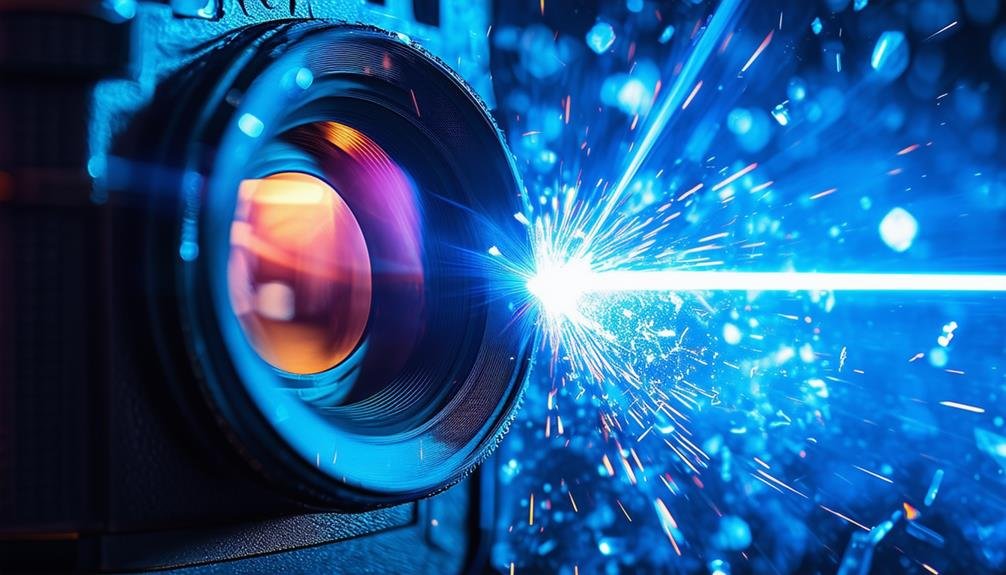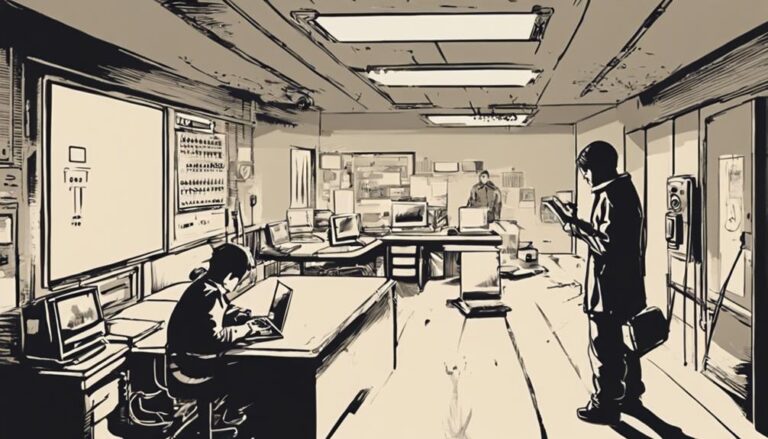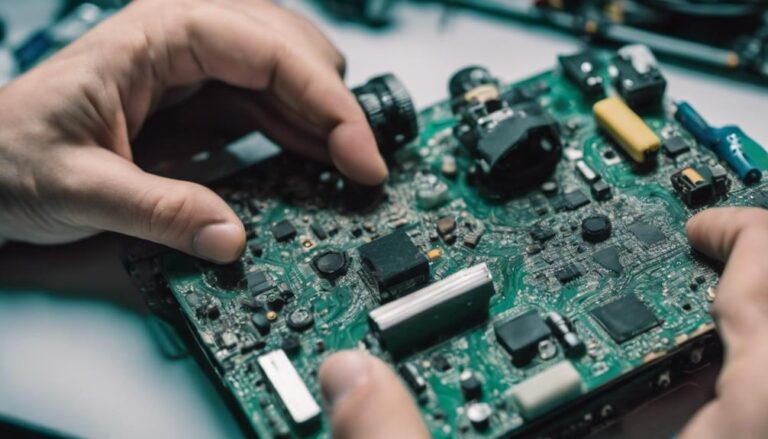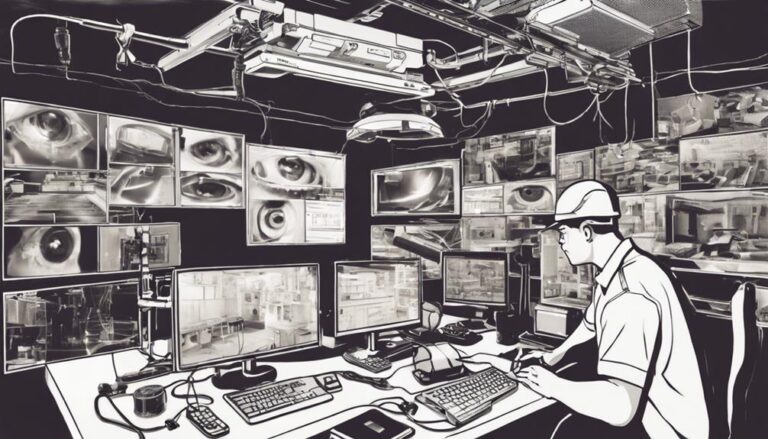To destroy a camera with a laser, you'll want to target its vulnerable components like the lens and image sensor. Using a high-powered solid-state laser is effective, as it can melt the lens or permanently damage the sensor with concentrated exposure. Be mindful of the laser's wavelength; infrared lasers penetrate deeply, causing more damage. However, always prioritize safety by wearing goggles and controlling your environment. Instead of destruction, consider modifying the camera or using it for training, as these alternatives can provide creative avenues and enhance your skills. There's much more to explore about achieving your goals efficiently!
Understanding Laser Types
When you think of lasers, a vivid image of a focused beam cutting through darkness might come to mind. However, not all lasers are created equal, and understanding the different types can empower you to make informed decisions. There are primarily three categories of lasers: gas, solid-state, and semiconductor. Each type has distinct characteristics that influence its power and application.
Gas lasers, such as the helium-neon laser, are known for their high-quality beams and stability. They're often used in academic settings and for precision tasks. Solid-state lasers, like the neodymium-doped yttrium aluminum garnet (Nd:YAG) laser, pack a punch with higher power levels and are typically used in industrial applications. Then there are semiconductor lasers, commonly found in everyday devices like laser pointers and barcode scanners. These are compact but can also be quite potent.
Understanding these distinctions helps you gauge the potential impact of a laser on various targets, including cameras. Each type has different wavelengths and energy outputs, which can affect how they interact with materials. For instance, a higher-powered solid-state laser may cause more immediate damage, while a gas laser might require a longer exposure to achieve similar results.
Knowing the laser types and their capabilities can provide you with the freedom to explore their applications responsibly and creatively. Whether for artistic expression or other endeavors, awareness of these tools is essential.
Camera Components Vulnerable to Lasers
Laser beams can wreak havoc on specific components of a camera, rendering it inoperable or severely impaired. If you're curious about which parts are particularly susceptible to laser damage, search no further. Understanding these vulnerabilities can help you appreciate how easily a camera can be compromised.
Here's a quick overview of the camera components that lasers can damage:
| Component | Potential Damage | Impact on Function |
|---|---|---|
| Lens | Melted or burned elements | Blurry images or no focus |
| Image Sensor | Permanent pixel burn | Inaccurate color capture |
| Viewfinder | Disrupted optics | Difficulty in framing shots |
When you direct a laser at the lens, you risk melting coatings or even the glass itself. This not only distorts the image but can also render the lens useless. The image sensor, often the heart of a digital camera, is highly sensitive to intense light. A direct hit can cause permanent damage, leading to spots or streaks in every photo. Finally, the viewfinder's optics can be disrupted, making it hard to frame your shots accurately.
With this knowledge, you can see how easily a camera can fall victim to lasers. It's a reminder that even powerful tools like cameras have their weaknesses, and sometimes, curiosity can come with unintended consequences.
The Science of Laser Damage
The science behind laser damage is rooted in the interaction between light energy and materials. When a laser beam strikes a surface, it delivers concentrated energy in the form of photons. These photons can excite the atoms in the material, leading to a variety of physical changes. Depending on the laser's intensity and wavelength, this energy can cause localized heating, melting, or even vaporization of the material.
In a camera, the lens and sensor are particularly susceptible to laser damage. The lens, usually made of glass or plastic, can absorb the laser's energy, causing it to crack or become opaque. The sensor, often made of semiconductor materials, can be permanently altered by excessive light exposure. This alteration can lead to dead pixels or complete failure, rendering the camera useless.
Understanding the laser's properties is essential. Different wavelengths interact differently with materials; for instance, infrared lasers might penetrate deeper into surfaces compared to visible lasers. This means that the choice of laser can greatly affect the extent of the damage.
Moreover, the duration of exposure plays a role. A brief, high-intensity pulse can deliver enough energy to cause immediate damage, while prolonged exposure to lower intensity might also lead to gradual degradation.
Ultimately, knowing how lasers interact with the components of a camera empowers you to wield this technology with precision. Just remember, with great power comes great responsibility—use your newfound knowledge wisely.
Safety Precautions to Consider
Before diving into any experimentation with lasers, it is vital to prioritize safety. You might be excited about the potential to release the destructive power of a laser on a camera, but remember: with great power comes great responsibility. Taking the right safety precautions can mean the difference between a thrilling experiment and a dangerous situation.
Here are a few significant precautions you should always consider:
- Protect Your Eyes: Lasers can cause irreversible damage to your eyesight. Wear appropriate laser safety goggles designed for the wavelength you're working with.
- Control Your Environment: Make sure you're in a controlled area, free from flammable materials and out of reach of curious onlookers who might inadvertently get in harm's way.
- Know the Equipment: Familiarize yourself with your laser's specifications and operational guidelines. Ignorance can lead to unexpected accidents.
Alternatives to Destruction
While experimenting with lasers can be fascinating, you might want to contemplate alternatives to outright destruction. Instead of obliterating a camera, consider exploring ways to repurpose it or enhance your skills. You'll find that creativity can lead to more fulfilling experiences than mere destruction.
Here's a table to illustrate some alternatives:
| Action | Outcome |
|---|---|
| Modify the Camera | Create unique photographic effects |
| Disassemble Parts | Learn about camera mechanics |
| Use for Training | Improve your laser handling skills |
Modifying your camera can open up a world of artistic possibilities. Instead of a laser blast, why not use filters or lenses? You could even create a DIY project that turns your camera into a pinhole or infrared device, expanding your photographic horizons.
Disassembling a camera lets you dive deep into its inner workings. You'll gain invaluable knowledge about optics and electronics, which can be incredibly freeing. Plus, you might find a way to salvage parts for future projects.
Lastly, using the camera as a training tool could enhance your understanding and control over laser technology. Focus on safety and precision, and you'll be better equipped to handle more advanced equipment down the line.
Frequently Asked Questions
What Legal Consequences Exist for Destroying Someone Else's Camera With a Laser?
If you destroy someone else's camera, you could face serious legal consequences. Depending on the situation, you might be charged with vandalism or destruction of property, which can lead to fines or even jail time. You'd also likely be responsible for the cost of replacing the camera. It's always better to resolve conflicts peacefully rather than resorting to actions that could land you in legal trouble. Protect your freedom by respecting others' property.
Can a Laser Destroy a Camera From a Significant Distance?
When you're considering whether a laser can destroy a camera from a significant distance, it really depends on the laser's power and the distance involved. Most consumer lasers won't have the intensity to cause damage unless you're very close. Higher-powered lasers might be effective, but they can also be dangerous and illegal to use recklessly. Always think about the consequences before engaging in any destructive actions, even if you feel justified.
Are There Specific Lasers That Are More Effective for This Purpose?
When considering lasers, some are definitely more effective than others for specific tasks. You'd want to look for high-powered lasers that emit focused beams, as they can achieve greater damage with precision. However, remember that using lasers irresponsibly can lead to serious safety and legal issues. It's always best to respect the boundaries of others' property and consider the implications of your actions before proceeding with any intense endeavors.
Does Weather Affect the Effectiveness of Lasers on Camera Damage?
Imagine trying to use a laser on a camera during a rainy day. You'd quickly realize that the moisture in the air can scatter the laser beam, reducing its effectiveness. Weather can greatly impact how lasers perform; humidity, fog, or rain can diminish the intensity and precision of the beam. So, if you're looking for ideal results, it's best to choose a clear, dry day for your endeavors.
How Can I Test a Laser's Intensity Before Using It on a Camera?
To test a laser's intensity, you can use a light meter or photodetector. These tools measure the power output directly, helping you gauge its effectiveness. Alternatively, try shining the laser on a variety of surfaces, noting how it reacts. Just remember, safety's key—always wear protective eyewear. It's also wise to conduct your tests in a controlled environment to avoid unintended consequences. Enjoy your exploration, but be cautious with your findings!



